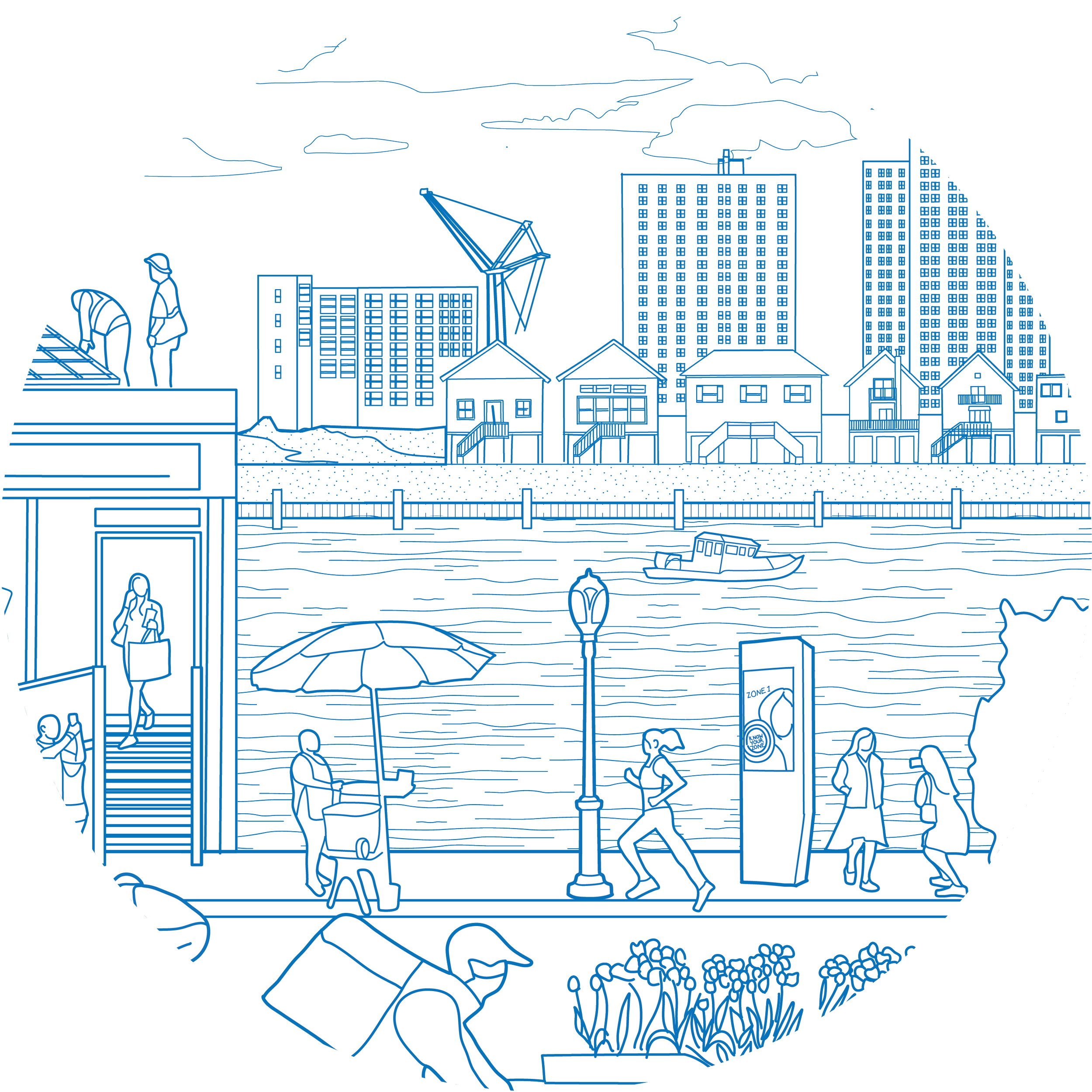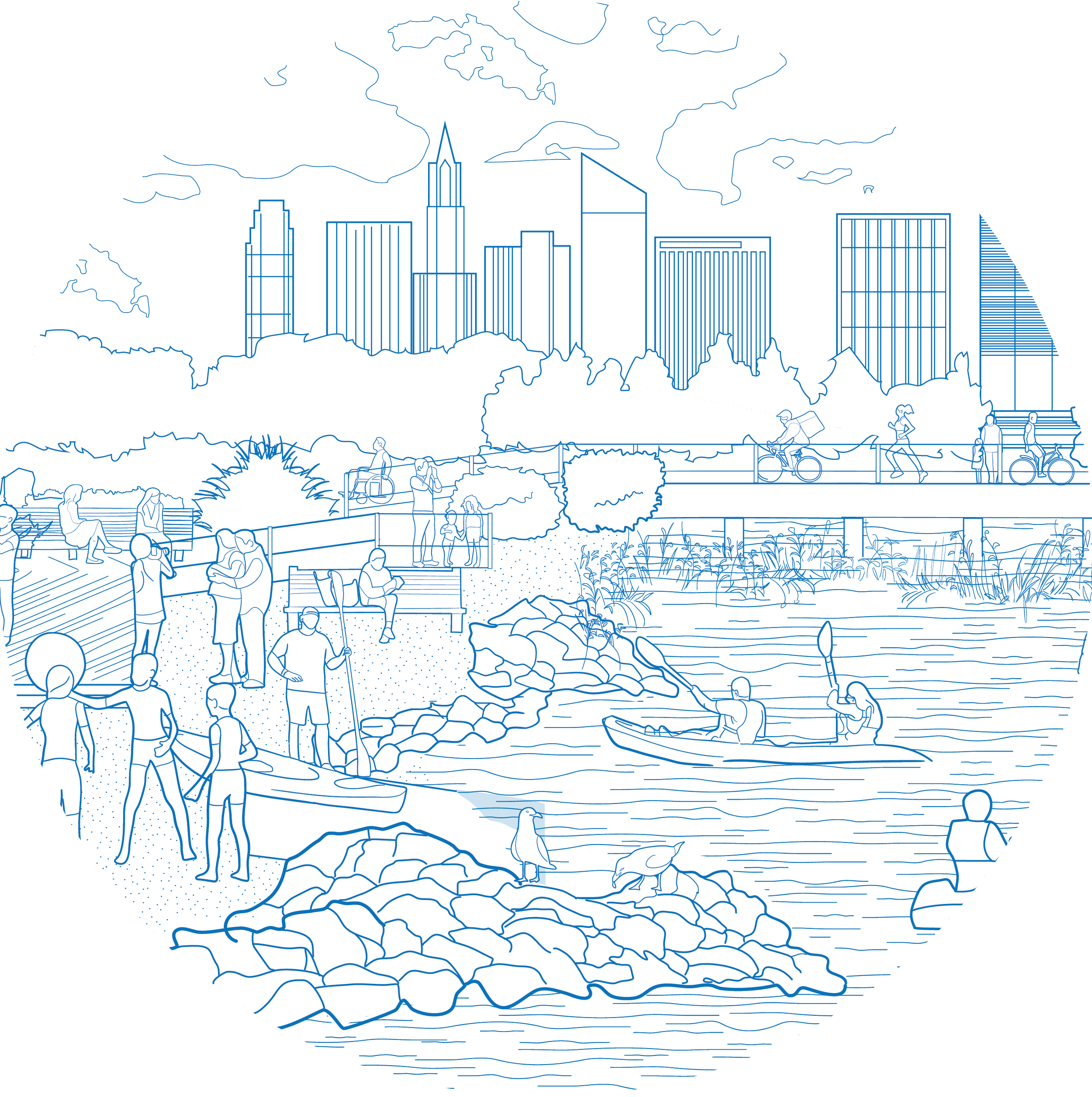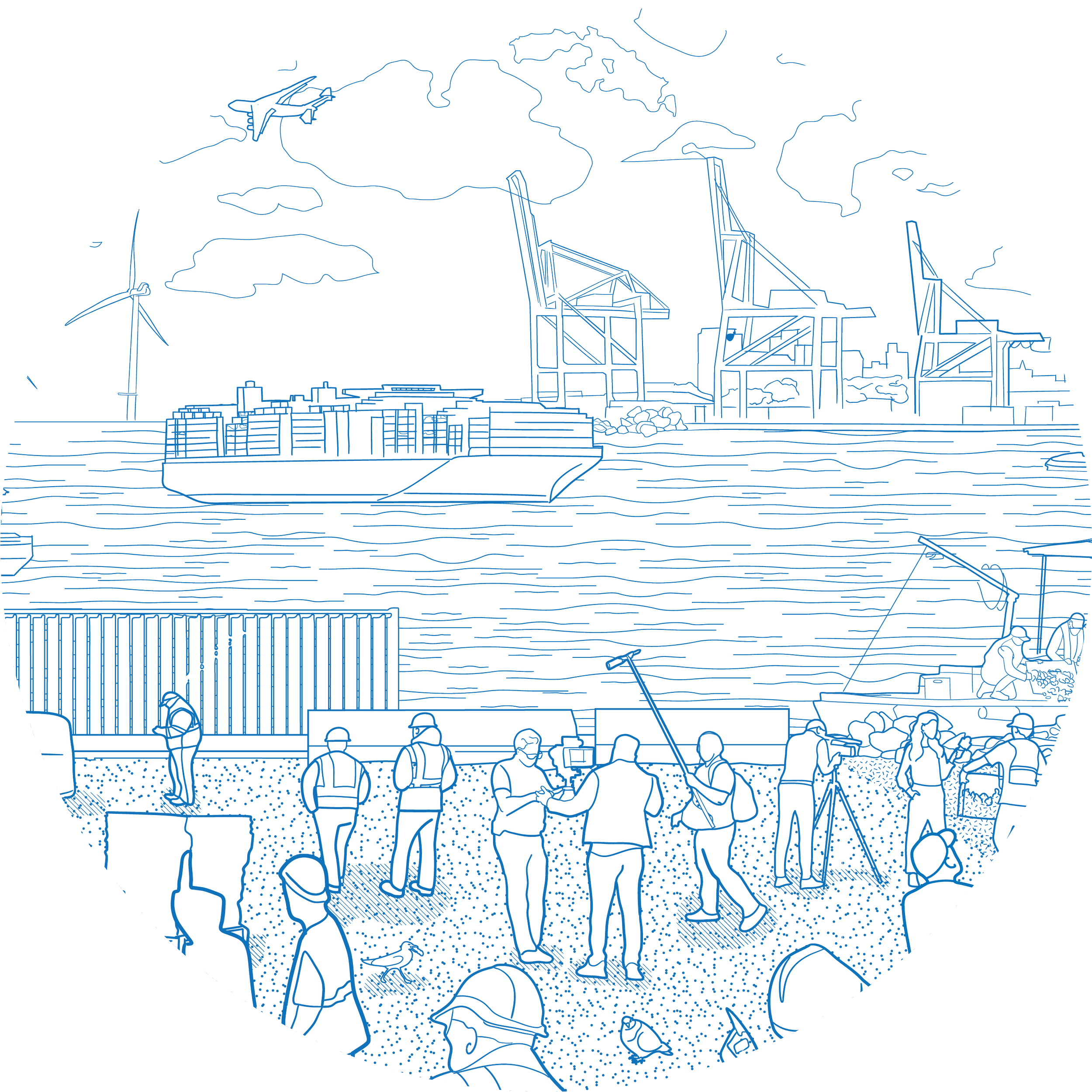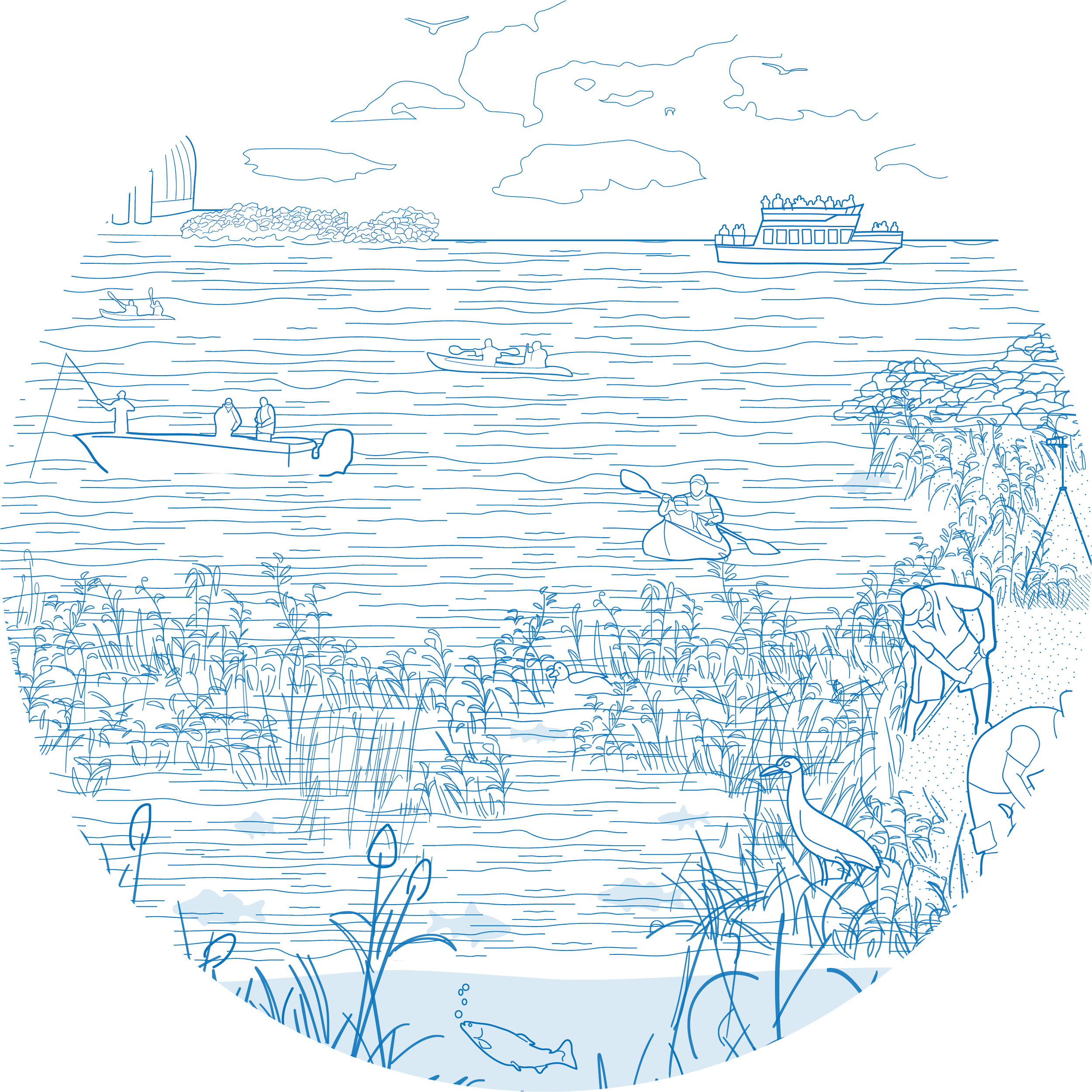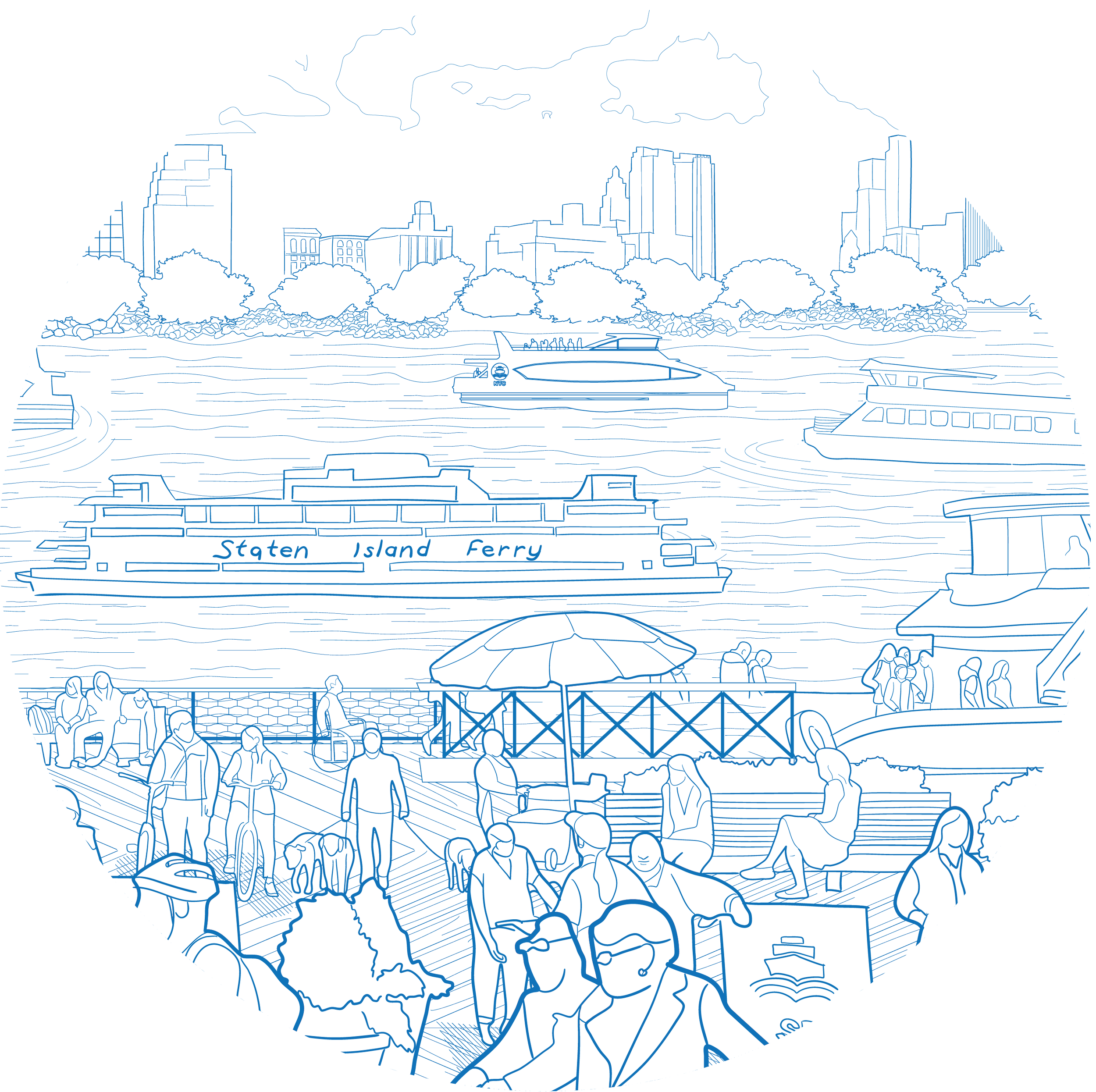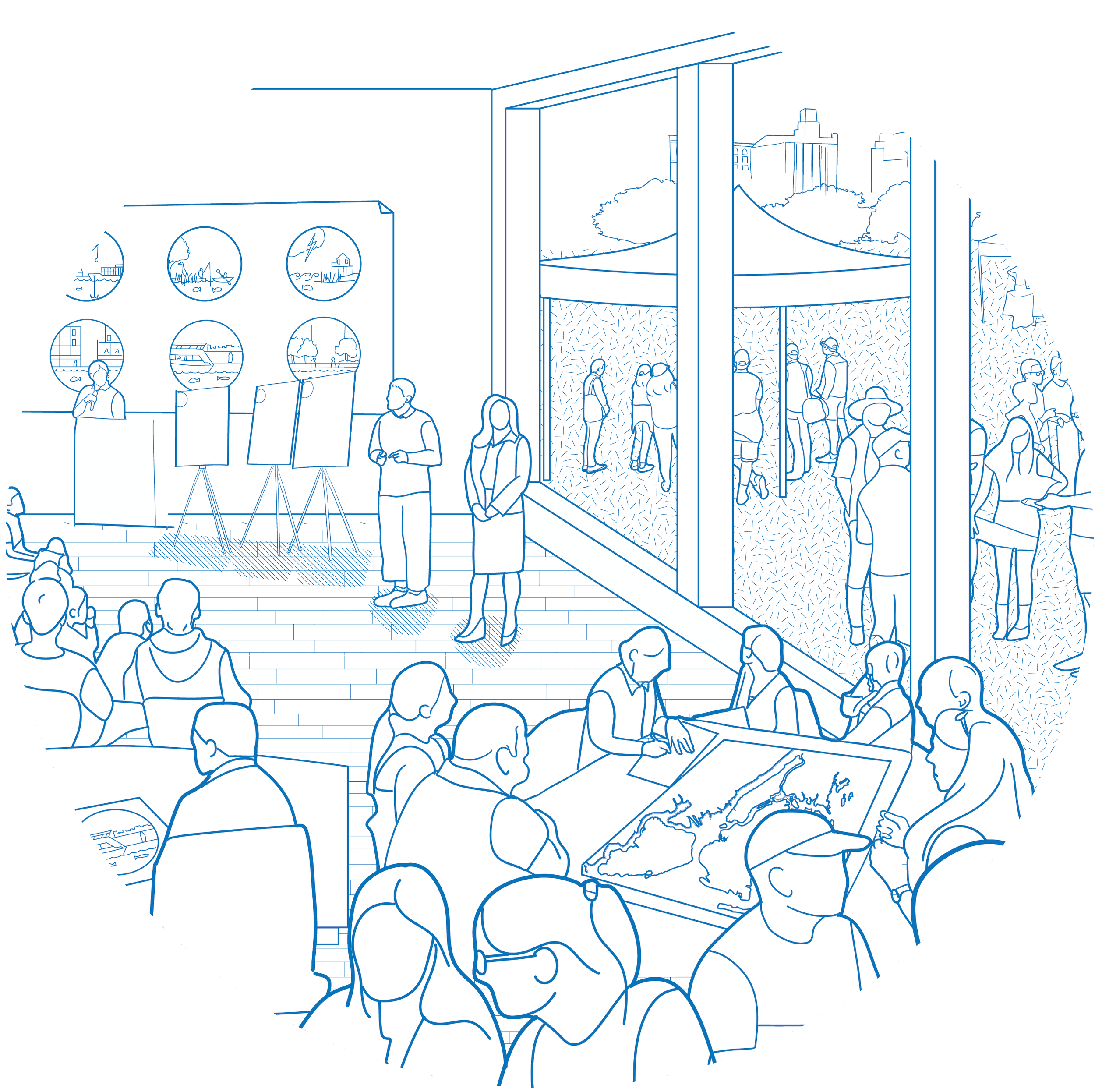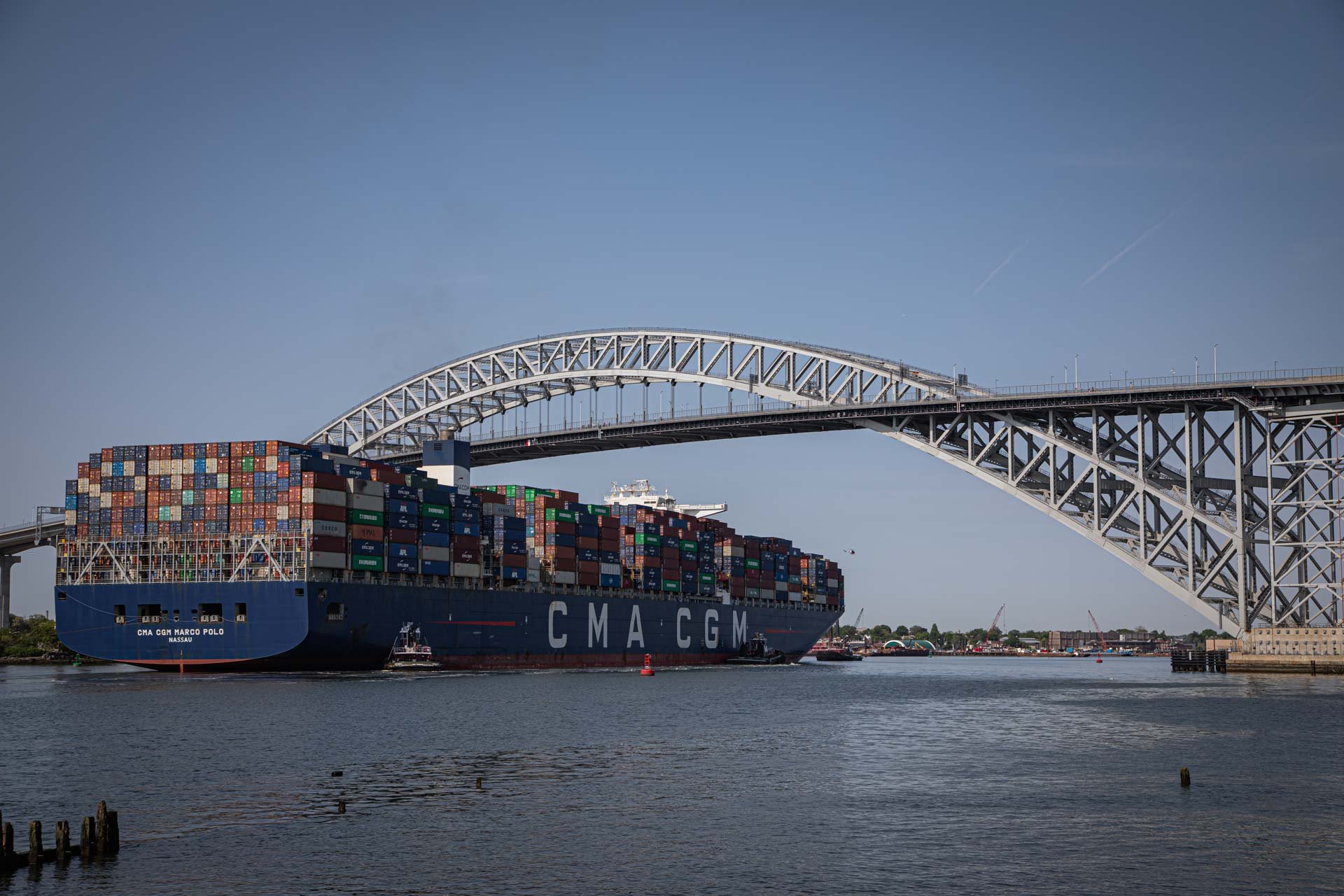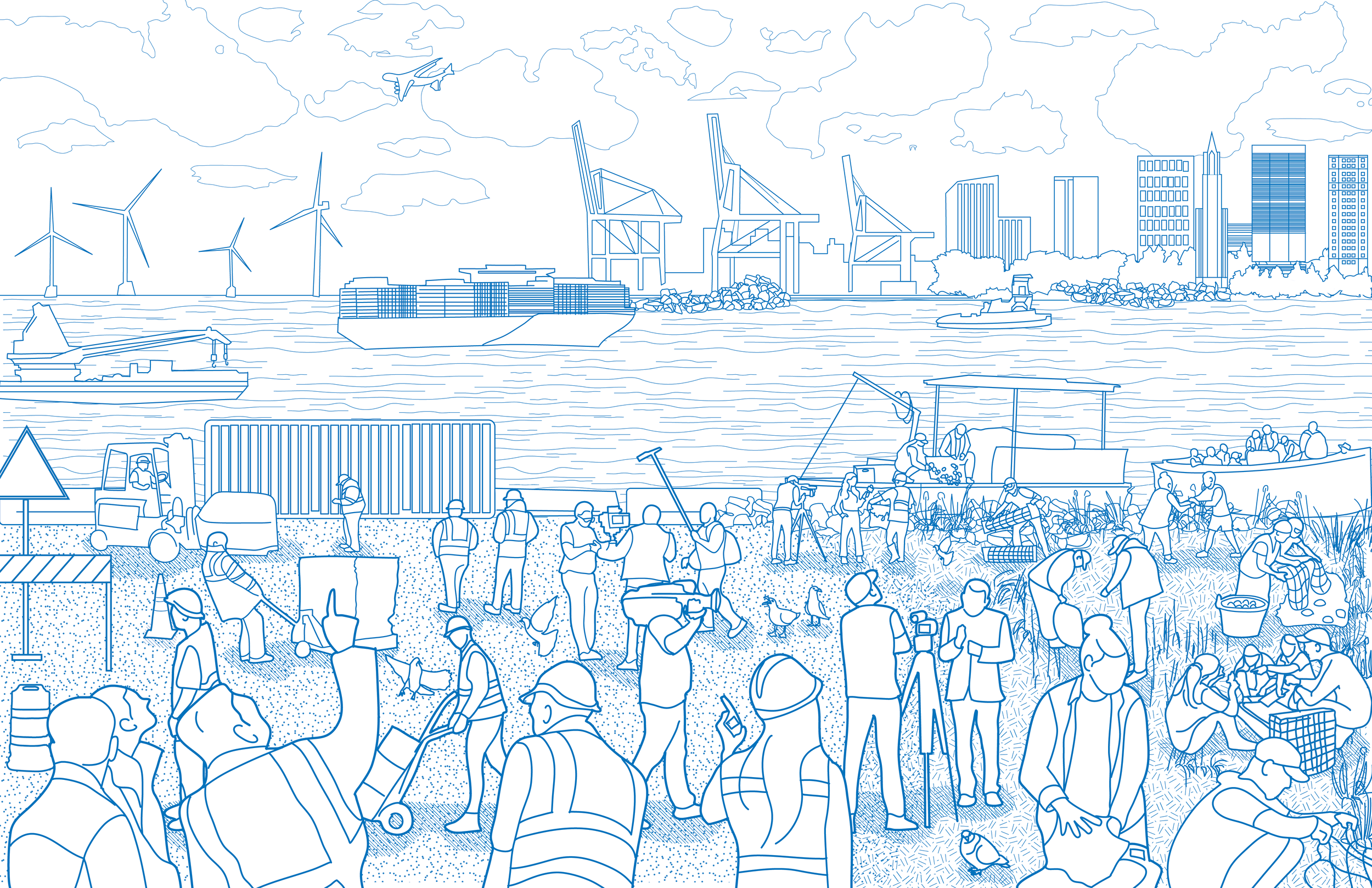
Economic Opportunity
NYC’s waterfront and waterways present exciting opportunities to build upon the green economy, sustain and create a diverse mix of jobs for New Yorkers, improve key infrastructure and support tourism in the next 10 years and beyond.
Throughout its history, the New York Harbor has played a vital role in creating economic opportunity for New Yorkers. NYC grew into a domestic and international center of trade and commerce partly due to the presence of its deep harbor and connection to the Erie Canal.
The City can help generate economic opportunity for New Yorkers by expanding access to well-paying jobs as part of its climate mitigation strategies. These strategies include transforming how energy is produced and distributed in NYC, retrofitting buildings to be more efficient, and promoting greener forms of production and distribution. In addition, the City can help equip New Yorkers with the skills they need to find jobs in established and emerging industries that provide the potential for careers. These efforts, combined with enhancements to infrastructure and cleaning up contaminated sites, help drive economic growth and upward mobility in economically disadvantaged communities and improve their quality of life.
Advocate for a 21st century working waterfront by pivoting to green technology and environmentally sustainable practices
+ How can we do it?
Harness NYC’s waterfront setting to help diversify the economy and drive equitable economic recovery
+ How can we do it?
Connect investments on the waterfront to employment and career advancement opportunities for New Yorkers.
+ How can we do it?
Advance categories of investments in waterfront areas that broadly support economic activity locally and throughout the region.
+ How can we do it?
Promote the use of our waterways for entertainment, hospitality, and education to provide jobs and drive tourism, including ecotourism.
+ How can we do it?
